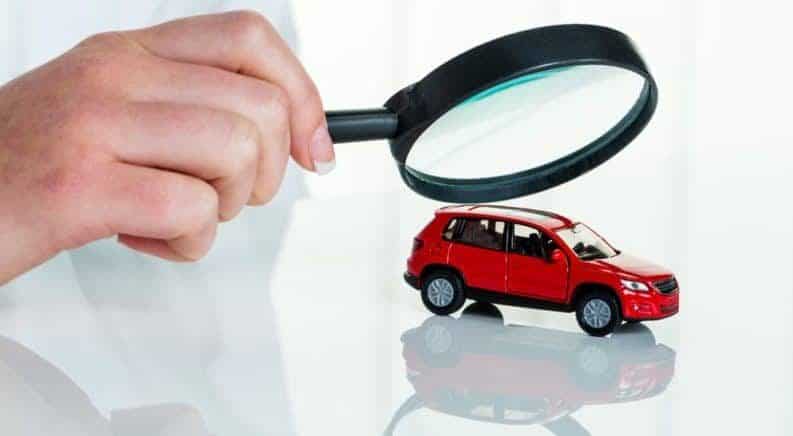Aside from purchasing a home, buying a new (or ‘new to you’ vehicle) can be a daunting experience, challenging on any number of levels. Any expectation of satisfaction, as well as the hope of a good deal, is tempered by your own willingness to perform the due diligence required to achieve those goals. Doing so requires both insight and introspection. First, it’s important to ask yourself what you’re looking for, both in terms of your vehicle needs and in terms of financing as well. Secondly, it’s crucial to make sure that you’re genuinely well-informed on the nuances of any options that you’re considering. That said, the need for such effort can often be discouraged by our simple tendency to focus on ‘what we want’ versus ‘what is in our best interests.’ To be clear, we would never discourage anyone from our natural inclination to buy a brand new vehicle, but it’s important that we’re willing to consider the value of searching used cars for sale as well. Only by doing so, can we guarantee that we’ve explored all options worth considering before signing on the dreaded ‘dotted line.’ With that in mind, let’s take a look at some of the arguments in favor of buying pre-owned, just in case it’s something that you might want to consider.
Increased Selection
Combining new model years of existing vehicles, as well as newly-introduced models, around 250 new cars hit U.S. dealerships each year. While this might seem like plenty to choose from, your selection is reduced significantly based on budget, automaker preference, performance needs, and personal taste. For prospective buyers without any particular preference, the decision of ‘which car to buy’ can be daunting and, despite the variety, they might feel as though they have relatively little to choose from.
That said, increasing your search to include the last three model years, nearly triples the variety of vehicles you have to choose. Granted, it may be challenging to find the exactly make, model, year, trim level and features that you’re looking for. However, some people might be more easily satisfied with the greater selection of options to choose from.
Depreciation
Perhaps the greatest argument in favor of buying pre-owned versus new comes in assessing depreciation. For example, let’s say that you purchase a new model for $30,000. Are you aware of just how quickly it will begin to lose value? We’ve all heard the old adage that “ a new car loses value the moment you drive it off the dealer lot,” but are you aware of just how significant that loss of value is?
Before the rear tires have even left the dealership, that vehicle will have lost approximate 11% of its value. This means that, if you were to pull a U-turn, drive it back onto the dealer lot and try to sell it back, the dealership might offer you less than $27,000 for the very car you just purchased.
And this aggressive rate of decline in value continues through the first five years of ownership. After the first year, a new car is worth approximately 25% of the original sales price. It is worth up to 46% less after three years of ownership and, after five years, that $30,000 vehicle is worth around $11,000 at best (a decrease over 60%). This means that any attempt to re-sell the vehicle results in a significantly lower ROI for the original owner.
For a second-owner, however, it could mean the ability to get more car for their money. Depending on advances in technology and amenities, purchase of a well-maintained 3-5-year-old vehicle can still be a very satisfying experience. This is compounded by the fact that depreciation of that vehicle might allow them to afford a more expensive model or trim level, which otherwise might have been outside of their price range.
It also means that the second-owner can expect a slower rate of depreciation, meaning that (if the vehicle is well cared for) they can expect a better ROI at the time of resale.
Lower Front-End & Incremental Costs
Do you realize that purchasing a used vehicle normally entitles the buyer to lower sales tax, title and registration fees? Any savings on the front-end are certainly welcome, but even more deserving of mention are the lower insurance costs. Bad decreasing monthly insurance costs, you can enjoy incremental savings throughout the life of the vehicle.
Available Technology
As alluded to above, a 3-5-year-old pre-owned vehicle might have a lot to offer. This is especially true considering that such features as Bluetooth, smartphone integration, music streaming and Apple Car Play / Android Auto compatibility have become progressively more standard in recent years. Even built-in navigation or WiFi could be found in a pre-owned vehicle at this point, giving you all the more reason to consider a wider range of options.
Longevity
Contrary to popular belief, today’s vehicles aren’t ‘made to be disposable.’ If anything, many vehicles are enjoying a longer lifespan reaching well above 250,000 miles. If the average mileage incurred by an American driver falls between 10,000-15,000 miles per year, it’s not difficult to estimate just how many years that vehicle could last if well-maintained.
Always remember, every moment of ownership beyond the point that a vehicle is paid off reduces the overall cost that you paid for it. While some people might be able to justify constant payments in a lease program, in return for shiny new vehicles each year, a smarter investment is to get the most mileage you can out of a vehicle. It’s just another means of making your buying dollar go further.
Is Buying Pre-Owned Right For You?
Ultimately, only you can decide for sure whether or not a pre-owned vehicle is in your best interests. There are certainly countless benefits to be enjoyed in doing so, but true satisfaction in any car-buying experience comes in finding the perfect fit for the unique demands of your life and budget.




